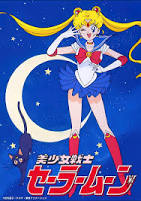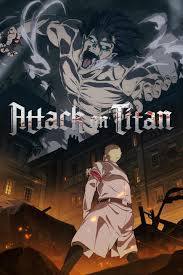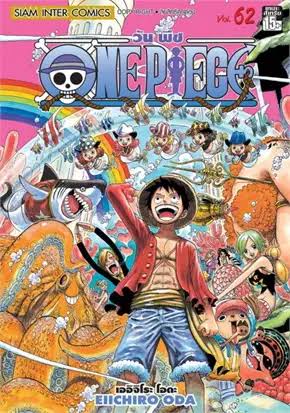The Rise of Anime: How Japanese Animation Took over the World
In the past few years, the world has seen a change in the entertainment industry. A rise in the Asian entertainment industry from music to films, art, and even dancing. But we won't be talking about those but focus on those in the article more or less on the film aspect of the industry more precisely Japanese animation, or anime, which has been nothing short of spectacle. An exclusive interest for a selected amount of devoted fan base, to a global powerhouse enthralling viewers and aspiring artists all over.
Currently, anime is more than another style of animation - it transcends cultural boundaries, demography, and genres. Its distinct blending of colors, in-depth characters, and exciting and complex storylines make it a hub for modern entertainment. Aniseing the inspiration for numerous films, music, cuisine, variety shows, and music videos and slipping into the fashion and sports scene, leaving remarkable trends in its wake.
What are the reasons for this new change? How do the means of entertainment exclusive to Japan (Asia and people from around the world) manage to leave the shores of once secluded space into the vast scenes? We will discuss that and more in this article, exploring the fascinating history of anime how it got to this point, and its impact on today's pop culture. Diving into what made anime what it is from recent success to its forgettable characters.
Currently, anime is more than another style of animation - it transcends cultural boundaries, demography, and genres. Its distinct blending of colors, in-depth characters, and exciting and complex storylines make it a hub for modern entertainment. Aniseing the inspiration for numerous films, music, cuisine, variety shows, and music videos and slipping into the fashion and sports scene, leaving remarkable trends in its wake.
What are the reasons for this new change? How do the means of entertainment exclusive to Japan (Asia and people from around the world) manage to leave the shores of once secluded space into the vast scenes? We will discuss that and more in this article, exploring the fascinating history of anime how it got to this point, and its impact on today's pop culture. Diving into what made anime what it is from recent success to its forgettable characters.




Early Beginnings (1910s-1940s)
Anime's origins date back to early 20th-century Japan, where it drew inspiration from Western animation and manga. The first Japanese animations, "Katsudō Shashin" (1907) and "Namakura-gatana" (1917), paved the way for the industry's growth. During World War II, anime served as a tool for entertainment, but primarily as a means to disseminate nationalist and military propaganda.
Anime's origins date back to early 20th-century Japan, where it drew inspiration from Western animation and manga. The first Japanese animations, "Katsudō Shashin" (1907) and "Namakura-gatana" (1917), paved the way for the industry's growth. During World War II, anime served as a tool for entertainment, but primarily as a means to disseminate nationalist and military propaganda.
Post-War Era (1940s-1960s)
After the grueling war which claimed thousands if not hundreds of lives, anime took a rebranding, taking a shift from the corrupt practices it was earlier used for, and shifted its target audience from spreading propaganda to child entertainment and education. The first ever anime television series "Astro Boy"(1963) was created by Osamu Tezuka, who is considered in Modern-day animation as the "God of Manga" or "Father of Anime". This era saw the creation of iconic animation studios like Mushi Production and Toei Animation.
After the grueling war which claimed thousands if not hundreds of lives, anime took a rebranding, taking a shift from the corrupt practices it was earlier used for, and shifted its target audience from spreading propaganda to child entertainment and education. The first ever anime television series "Astro Boy"(1963) was created by Osamu Tezuka, who is considered in Modern-day animation as the "God of Manga" or "Father of Anime". This era saw the creation of iconic animation studios like Mushi Production and Toei Animation.
Golden Era (1970s-1980s)
The 1970s and 1980s were often referred to as the "Golden Age" of anime and manga. This period saw the creation of different beloved Anime/Manga like "Mobile Suit Gundam"(1979), "Nausicaa of the Valley of the Wind"(1984), and "Dragon Ball"(1986). This era was known as the "Anime Renaissance" or "Modern Anime Era" of anime cause of it revival of anime once seen as dead, it was mostly credited to the 1980s more specifically latter part of the decade. Studios like Studio Ghibli, founded at that time by Hayao Miyazaki and Isao Takahata, began the production of critically acclaimed films.
This era started the global outreach of anime to an international audience with the successful creation of anime-centered video games in the late 1970s and early 1980s the likes of Lupin the 3rd, Mazinger Z and Space Battleship Yamato who were adapted into arcade games. With the introduction of game consoles, anime video games became more popular games such as Dragon Ball: Dragon Dahikyō (1986) and Mobile Suit Gundam (1986).
The 1970s and 1980s were often referred to as the "Golden Age" of anime and manga. This period saw the creation of different beloved Anime/Manga like "Mobile Suit Gundam"(1979), "Nausicaa of the Valley of the Wind"(1984), and "Dragon Ball"(1986). This era was known as the "Anime Renaissance" or "Modern Anime Era" of anime cause of it revival of anime once seen as dead, it was mostly credited to the 1980s more specifically latter part of the decade. Studios like Studio Ghibli, founded at that time by Hayao Miyazaki and Isao Takahata, began the production of critically acclaimed films.
This era started the global outreach of anime to an international audience with the successful creation of anime-centered video games in the late 1970s and early 1980s the likes of Lupin the 3rd, Mazinger Z and Space Battleship Yamato who were adapted into arcade games. With the introduction of game consoles, anime video games became more popular games such as Dragon Ball: Dragon Dahikyō (1986) and Mobile Suit Gundam (1986).
Modern Era (1990s-present)
The 1990s saw the rise of anime on television with shows like "Sailor Moon" (1992), "Pokémon" (1997) and "Yu-Gi-Oh" (1998) rode the surge in animation gaining notable fame worldwide, with this newfound fame came improvements in the production of anime, enabling faster and more efficient creation of high-quality anime.
The modern era of anime came with its revolutionary change with a few turning points; World Class TV production of a different style of animation leading to collaboration with foreigners outside Japanese animation " Avatar: The Last Airbender" and "The Animatrix". This modern era of animation brought a creation in genres and subgenres catered to the diverse tastes of the audience, psychological thrillers, romantic comedies, isekai and so many others found a change in the typical genre in which anime was once produced.
A recent advancement in anime is the advent of streaming services, the 21st Century anime has become so popular streaming services are needed to help companies in Japan distribute to non-Japanese speaking viewers providing services of their spoken language platforms like Funimation, Crunchyroll and Netflix systematically transformed the way anime is consumed making it easier for content more available for foreigners in different parts of the world, which in turn gives creator creative freedom to produce more niche content resulting in more original content.
The 1990s saw the rise of anime on television with shows like "Sailor Moon" (1992), "Pokémon" (1997) and "Yu-Gi-Oh" (1998) rode the surge in animation gaining notable fame worldwide, with this newfound fame came improvements in the production of anime, enabling faster and more efficient creation of high-quality anime.
The modern era of anime came with its revolutionary change with a few turning points; World Class TV production of a different style of animation leading to collaboration with foreigners outside Japanese animation " Avatar: The Last Airbender" and "The Animatrix". This modern era of animation brought a creation in genres and subgenres catered to the diverse tastes of the audience, psychological thrillers, romantic comedies, isekai and so many others found a change in the typical genre in which anime was once produced.
A recent advancement in anime is the advent of streaming services, the 21st Century anime has become so popular streaming services are needed to help companies in Japan distribute to non-Japanese speaking viewers providing services of their spoken language platforms like Funimation, Crunchyroll and Netflix systematically transformed the way anime is consumed making it easier for content more available for foreigners in different parts of the world, which in turn gives creator creative freedom to produce more niche content resulting in more original content.
Anime's influence on pop culture
Anime has become a staple in modern-day pop culture regardless of its earlier. Anime has spread its influence on modern TV shows like the "Matrix" and "Inception" both citing anime as a source of its inspiration. What of the music scene where an increase in the ingestion of J-pop due to the use of soundtracks composed by artists for anime Ost's, not only J-pop artists, but even foreign artists like Childish Gambino and Kanye West have made samples of anime soundtracks. This list would not be complete without making mention of the fashion aspect regarding its global reach numerous fashion brands such as Baby, The Stars Shine Bright and Metamorphose Temps de Fille have all credited their success to anime and manga.
Anime was once shrouded in darkness from its beginnings as literal art drawing to influence propaganda to a global sensation that doesn't seem to be going anywhere soon. Despite this continuous unity of watchers, anime seems to not be going anywhere soon but will continue to grow deeper into society teaching many core values to its viewers.
Anime has become a staple in modern-day pop culture regardless of its earlier. Anime has spread its influence on modern TV shows like the "Matrix" and "Inception" both citing anime as a source of its inspiration. What of the music scene where an increase in the ingestion of J-pop due to the use of soundtracks composed by artists for anime Ost's, not only J-pop artists, but even foreign artists like Childish Gambino and Kanye West have made samples of anime soundtracks. This list would not be complete without making mention of the fashion aspect regarding its global reach numerous fashion brands such as Baby, The Stars Shine Bright and Metamorphose Temps de Fille have all credited their success to anime and manga.
Anime was once shrouded in darkness from its beginnings as literal art drawing to influence propaganda to a global sensation that doesn't seem to be going anywhere soon. Despite this continuous unity of watchers, anime seems to not be going anywhere soon but will continue to grow deeper into society teaching many core values to its viewers.

